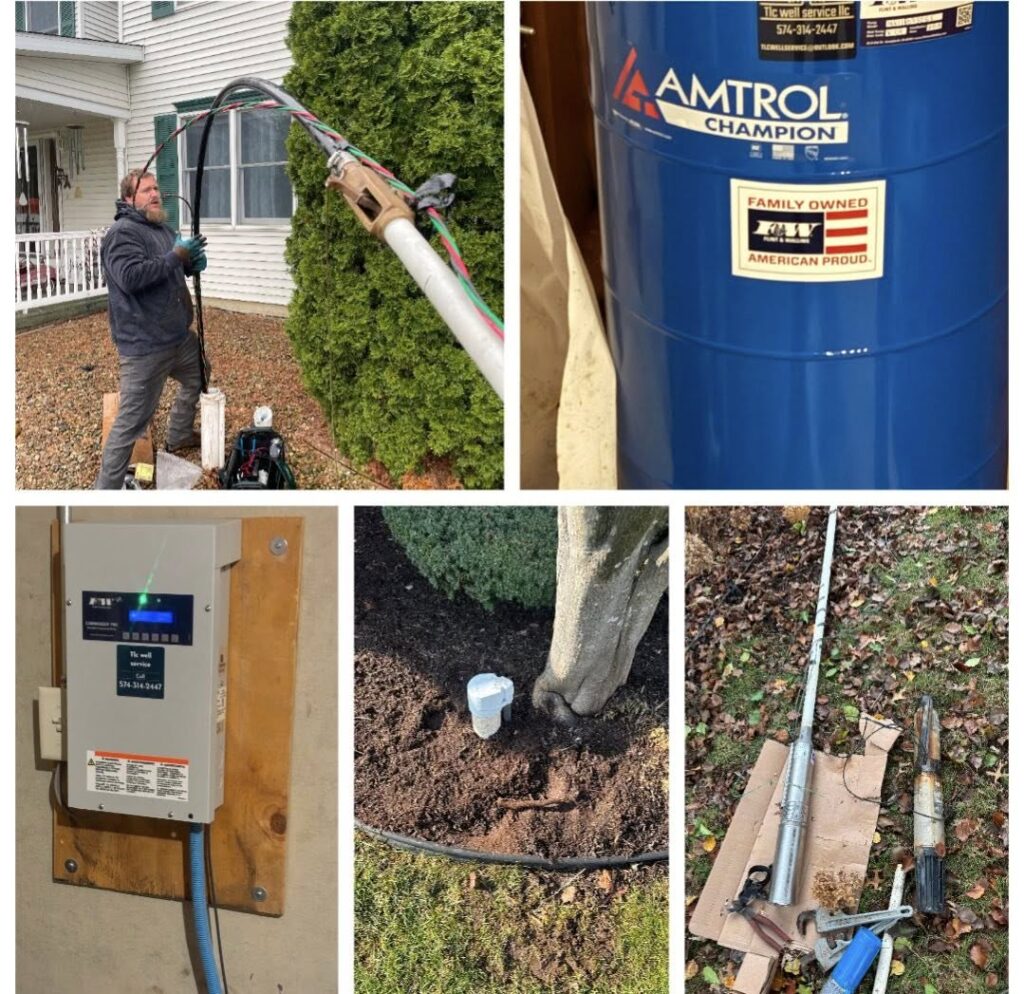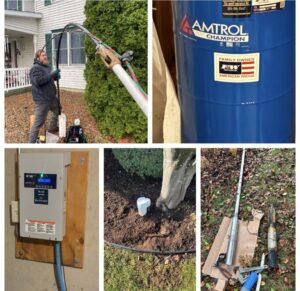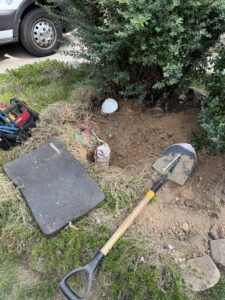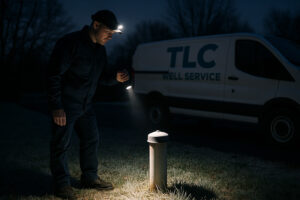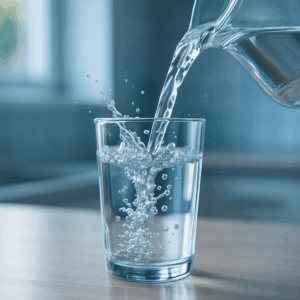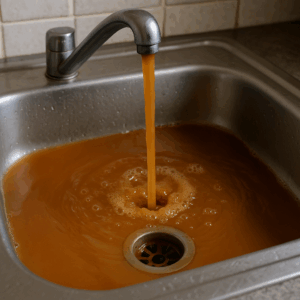Yes, some wells can run low or even go temporarily dry during extended droughts—especially shallow or aging wells—but many issues are preventable and fixable with the right assessment, conservation plan, and professional upgrades.
How Wells Work During Drought
Every private water well taps groundwater stored in soil and bedrock. In normal conditions, precipitation and underground flow recharge aquifers, keeping water levels within a stable seasonal range. During drought, recharge slows while daily demand often stays the same. If your pump draws faster than the well refills, the water column in the casing can drop, causing air to enter the line, sediment to stir up, and eventually—no water at the tap.
Why some wells are more vulnerable
- Shallow wells: Closer to the surface and most sensitive to seasonal changes.
- Older wells: May have reduced yield due to mineral scale, biofilm, or screen clogging.
- Low-yield aquifers: Geology limits the rate at which water refills the borehole.
- Undersized storage: Minimal buffer for peak usage (laundry + showers + irrigation).
Factors beyond rainfall
- Pump depth & settings: A pump set too high can lose prime as levels drop.
- Demand spikes: Filling pools, pressure washing, or irrigation during drought.
- Neighboring withdrawals: Multiple nearby wells can compound drawdown.
- Well construction: Casing diameter, screen, and development affect recovery.
It’s important to remember that “dry” is often temporary. Many wells rebound with reduced usage, rainfall, or professional rehabilitation. The key is acting before pump damage or contamination occurs.
Early Signs Your Well Is Running Low
Before a well goes completely dry, it usually sends signals. Pay attention to these changes during extended dry spells:
- Sputtering or “spitting” faucets as air enters the line.
- Cloudy, sandy, or discolored water from disturbed sediment at the screen.
- Noticeable pressure drops or fluctuations when multiple fixtures run.
- Longer pump cycles, hot control boxes, or frequent breaker trips.
- Appliance issues (ice maker, dishwasher) from inadequate flow.
If you see any of the above, take it seriously—those symptoms often appear days or weeks before total loss of flow, giving you a window to protect your pump and plan fixes.
Immediate Steps If Your Well’s Flow Drops
- Turn off the pump if faucets start sputtering or flow stops. Running a pump dry can cause overheating and premature failure.
- Pause high-demand activities (laundry, irrigation, long showers) to allow the well to recover.
- Check for leaks (toilets, exterior spigots, water softener backwash) that silently drain your water column.
- Give it time—even a few hours of rest can restore limited service in a low-yield well.
- Call a licensed pro to measure static water level, pump depth, and drawdown. Data guides the right fix.
Tip: Keep a few gallons of potable water on hand for basic needs whenever drought conditions persist.
Short-Term Fixes That Help During Drought
Controls & usage
- Stagger water use: Spread showers, laundry, and dishwashing across the day.
- Adjust pressure switch & tank settings: Optimized cycling reduces stress and short-cycling.
- Add temporary storage: A cistern or larger pressure tank buffers peak demand.
Hardware tweaks
- Lower the pump (if safe): A deeper set can access more of the water column.
- Pump replacement: Upgrading to an appropriate constant-pressure system can manage low yields better.
- Well rehabilitation: Cleaning the screen and removing mineral scale can restore yield.
These steps often restore reliable service quickly while you evaluate long-term options like deepening or redrilling.
Long-Term Solutions & Prevention
For properties that experience repeated drought-related outages, a strategic upgrade plan minimizes risk and protects equipment.
- Deepen or redrill into a more productive formation if geology allows.
- Install dedicated storage (e.g., 200–1,000+ gallons) with a booster pump for consistent household pressure.
- Right-size your system: Match pump, drop pipe, wire, and controls to actual yield and head requirements.
- Water-wise fixtures & landscaping: Low-flow fixtures, smart irrigation, and drought-tolerant plantings reduce peak demand.
- Protect against dry-run: Add sensors and controls that shut down the pump automatically when the well level drops.
The most effective prevention combines demand management, professional system design, and periodic performance testing so you can catch problems early.
Monitoring, Testing & Maintenance
Data drives better decisions. We recommend documenting your system’s baseline and checking it annually, and seasonally during drought:
- Static water level: The resting level when the pump is off.
- Pumping level & recovery: How far the level drops at typical flow, and how quickly it rebounds.
- Pump performance: Amperage, cycling frequency, and pressure readings under load.
- Water quality: Changes in turbidity, sand content, or taste can signal low water or screen issues.
Routine maintenance—sanitizing, screen cleaning, tank inspection, and control calibration—extends equipment life and preserves yield, especially through dry seasons.
Costs, Timelines & When to Call a Professional
Because every property and aquifer is different, costs range from modest adjustments to full system upgrades. After a site evaluation, we provide clear options, timelines, and estimates so you can choose the path that fits your home and budget.
Typical project timelines
- Control adjustments & minor repairs: Same day
- Pump lowering or replacement: 1–2 days
- Storage system installation: 1–3 days
- Well rehab (chemical/mechanical): 1–3 days
- Deepening/new well (where permitted): Project-dependent
When to call TLC Well Service
- Persistent sputtering, sandy water, or pressure drops
- Breaker trips, hot control box, or short-cycling
- No water after heavy use or irrigation
- Considering upgrades before peak summer demand
Professional assessment pays for itself by preventing pump damage, avoiding guesswork, and targeting improvements that truly increase reliability.
Concerned about your well during drought?
Schedule a well health check with TLC Well Service. We’ll measure levels, test performance, and design a right-sized plan for your home.
FAQs
- Will a well dry up in a drought?
- Yes, certain wells—especially shallow or older ones—can run low or temporarily dry during drought. With demand management and professional upgrades, most homes maintain reliable service.
- Is my well “ruined” if it goes dry?
- Usually not. Many wells recover once usage is reduced or recharge improves. Rehabilitation, pump adjustments, or storage can restore dependable service.
- Can lowering the pump fix the problem?
- Lowering the pump can help if there’s adequate water below the current set point and the well construction supports it. A professional must verify safe depth and clearance.
- What’s the fastest way to protect my pump?
- Install a dry-run protection control and practice staged usage (avoid running multiple high-demand fixtures at once) during drought.
- Should I add a storage tank?
- Yes, storage adds resilience by buffering peak demand. A properly sized tank with a booster pump maintains steady pressure even if your well yields slowly.
